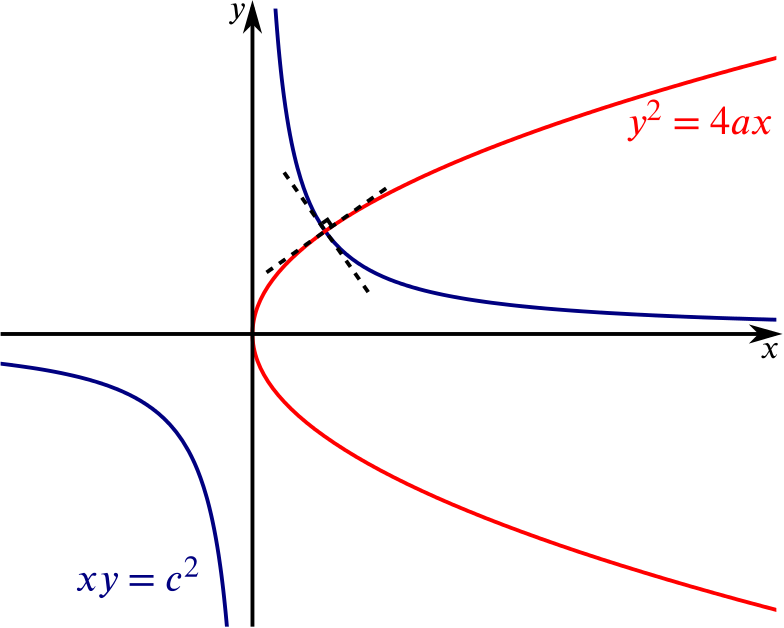The curves \(y^2=4ax\) and \(xy=c^2\) intersect at right angles. Prove that (i) \(c^4=32a^4\)

Using implicit differentiation on \(y^2 =4ax\), we have \(2y\dfrac{dy}{dx} = 4a\), so the gradient at \((p,q)\) is \(\dfrac{dy}{dx} = \dfrac{2a}{q}\).
Similarly, differentiating \(xy=c^2\), we have \(y+x\dfrac{dy}{dx} = 0\), so \(\dfrac{dy}{dx}= \dfrac{-y}{x}\), and the gradient at \((p,q)\) is \(\dfrac{-q}{p}\).
Since the curves are at right angles at \((p,q)\), we have \(\dfrac{2a}{q}\times\dfrac{-q}{p}=-1\), which simplifies to \(p = 2a\).
Combining this with \(\eqref{eq:intersection}\) we have \(q^2 = 8a^2\), and since \(p^2q^2=c^4\) we have \((2a)^28a^2 = c^4\), or \(c^4=32a^4\), as required.
Prove that (ii) if the tangent and normal to either curve at the point of intersection meet the \(x\)-axis at \(T\) and \(G\), then \(TG=6a\).
The tangent and normal both pass through \((p,q)\) and have gradients \(\dfrac{2a}{q}\) and \(\dfrac{-q}{p}\). So we can write their equations as \[x-p = \dfrac{2a}{q}(y-q),\qquad\text{and}\quad x-p = \dfrac{-q}{p}(y-q) .\]
Let these lines meet the \(x\)-axis at \((x_1,0)\) and \((x_2,0)\). Then we have \[x_1-p = -\dfrac{2a}{q}q,\qquad\text{and}\quad x_2-p = \dfrac{q}{p}q .\]
Subtracting these two and substituting from \(\eqref{eq:intersection}\), \[x_2-x_1 = \frac{q^2}{p}+2a = \frac{4ap}{p}+2a = 6a\] as required.

